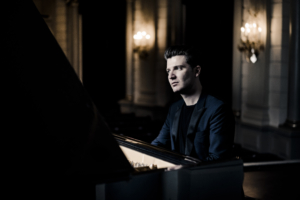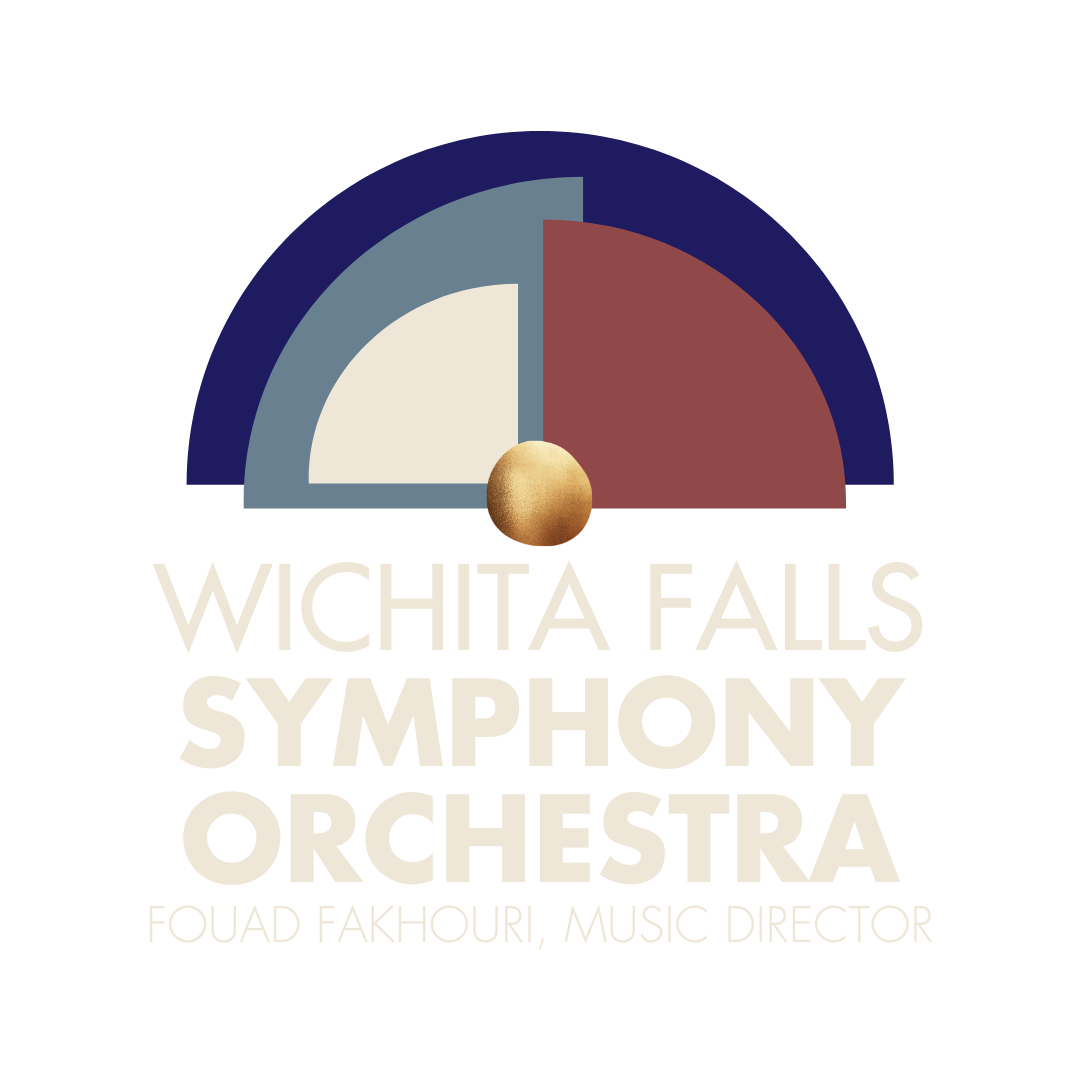Program Notes – March 8, 2025
Written by Todd Giles
Ludvig Von Beethoven: Coriolan Overture, Op. 62 (1807)
Ludvig Von Beethoven (1770–1827) first performed his Coriolan Overture at a concert in the home of his patron, Prince Lichnowsky, where he also conducted his first four symphonies, the Piano Concerto No. 4, and some arias from Leonore. One of the most frequently recorded and performed of Beethoven’s orchestral works, The Coriolan Overture—written while Beethoven was also working on his Fifth Symphony—was composed to accompany an 1804 play by Heinrich von Collin (1772–1811) by the same name. Set in ancient Rome, the tale of Gaius Marcius Coriolanus explores themes of political ambition, pride, and betrayal. The protagonist, a fierce Roman general, falls from grace due to his disdain for common people and the political machinations of those around him. Exiled, he allies himself with his former enemy, the Volsci, to exact revenge on Rome, which leads to his own tragic downfall.
The overture opens with a brooding theme in C minor, alternating between passages of strong defiance as Coriolanus struggles with his inner demons, and a contrasting lyrical motif in E-flat major which symbolizes the pleading of Coriolanus’s mother and wife to spare Rome. The central development section builds tension, yet amidst the storm there are moments of profound beauty and melancholy, showcasing Beethoven’s ability to evoke deep emotional resonance. The overture builds in intensity with dynamic contrasts, rhythmic drive, and powerful orchestration to convey the drama and tension of the story. It culminates in a dramatic climax, depicting Coriolanus’s tragic resolution and ultimate fate—death.
Tchaikovsky: Piano Concerto No. 1 in B-flat minor, Op. 23 (1875)
Pyotr Ilyich Tchaikovsky (1840–1893) was thirty-five when he wrote the first of his four concertos. The Piano Concerto No. 1 in B-flat minor is his most frequently performed work, not to mention the world’s most recorded piano concerto. Like Beethoven before him, much of Tchaikovsky’s music reflects his own state of mind during the time of composition—sometimes passionate, others despondent; always heart-on-his-sleeve Romanticism. It was his gift for melody that distinguished Tchaikovsky from his Russian counterparts composing at the time and is why audiences still flock to experience his music today. What set him apart from “The Five,” or the “Mighty Handful” as they were known in Russia, was his interest in the European tradition. Mozart was his idol, after all. That’s not to say that Tchaikovsky didn’t incorporate traditional peasant melodies into his music like Mussorgsky, Rimsky-Korsakov, and Borodin. He did; he was just more attracted to the style of recent European composers such as Schumann, Berlioz and Liszt. And rather than intentionally working to capture the sounds of everyday Russia life like The Five, Tchaikovsky’s concern lay more with how his music impacted his audiences on emotional and aesthetic levels.
The Piano Concerto No. 1 opens with a bold four-note horn theme that heralds in a series of powerful chords from the soloist. The piano and orchestra engage in a vibrant dialogue as they work through two themes, one a Ukrainian folk song, the other a gentler theme introduced by the woodwinds and later echoed by the piano. The interplay between the piano and orchestra is both dramatic and lyrical, showcasing Tchaikovsky’s ability to blend emotional depth with brilliant technical demands. The movement ends with a huge cadenza featuring some of classical music’s greatest virtuosic fireworks. The brief second movement provides a serene and lyrical interlude that contrasts with the two more dramatic outer movements. It opens with a whisper of gently plucked strings, followed by a lovely solo flute melody, which the piano and strings pick up. Though marked by its flowing melodies and a tranquil character, the piano still plays a prominent and expressive role, albeit a more tender and reflective one. The high-energy third movement bursts in with rhythmic drive and fiery enthusiasm. The piano and orchestra continue to engage in a spirited dialogue, featuring a theme from another Ukrainian folksong, again contrasted with another lyric Romantic theme, showcasing Tchaikovsky’s flair for dramatic contrasts and exuberant orchestration. The piano’s rapid scales and intricate passages demonstrate technical brilliance, while the orchestra provides an at times lyrical, at others energetic, accompaniment. The concerto concludes with an exhilarating coda, highlighting the concerto’s dramatic range and celebrating what can only be a virtuosic soloist at the top of their art.
Jean Sibelius: Symphony No. 3 in C major, Op. 52 (1907)
Regarded as Finland’s greatest composer, Jean Sibelius (1865–1957) is credited with helping his country develop a stronger national identity during the late 19th century as they fought off further Russification. Like Beethoven and Tchaikovsky before him, Sibelius created music of profound emotional depth and innovation. Sibelius found Tchaikovsky’s work particularly admirable, especially the rich orchestration and thematic development of his symphonies and concertos. Just as Tchaikovsky was inspired by his Classical predecessors Mozart and Beethoven (the latter marking the transition from the Classical period into the Romantic Period), so too did Sibelius find inspiration in his Romantic predecessor, Tchaikovsky. Similar to Beethoven, Sibelius was part of a generation who straddled the space between two periods—Late Romanticism and Modernism. While literary, artistic, and musical period markers such as Classical (c. 1700–1820), Romantic (c. 1800–1910), and Modern (c. 1890–1945) are helpful in defining the characteristics of particular styles, it is often those “in-between” artists whose work aids in the transition from one period to the next, who are the most intriguing. Sibelius certainly fits the bill there. While his first two symphonies bore a strong nationalist character fitting to their day, Sibelius’ Third Symphony, much to the surprise and disappointment to audiences and critics alike, cast a backwards glance to the earlier Classical period. As his career progressed, his later work in turn helped push the lushness and emotion of Late Romanticism into the more experimental milieu of the early 20th century.
Sibelius’ Third is written in three movements rather than the customary four, as the scherzo and finale are combined. The symphony opens softly with the cellos and bases, setting the stage for the movement’s introspective nature. As the movement progresses, we are introduced to contrasting themes that develop with a sense of fluidity and organic growth. Sibelius avoids traditional, overtly dramatic contrasts in favor of more subtle, gradual transitions and transformations of themes in this movement. The slow second movement, marked “Andantino con moto, quasi allegretto,” suggests a slightly faster tempo than a typical andantino, contributing to its sense of motion and lightness. The primary theme is introduced with a bright, dance-like rhythm that evolves playfully through various stages of development. There are also some false conclusions where the orchestra briefly fades out, leading us to believe the movement is ending, only to have Sibelius draw us back in with new things to say. Sibelius referred to the final movement, marked “Moderato—allegro ma non tanto,” as “the crystallization of chaos.” The chaos here is the play of motifs and tempos, where all of the melodies previously introduced return in thematic fragments, as well as some material yet introduced. The movement’s structure is notable for its fluidity and integration of themes, as heard in the way the moderato and allegro ma non tanto sections flow into each other with a sense of continuity, highlighting Sibelius’ skill in blending different musical ideas into a cohesive whole.




